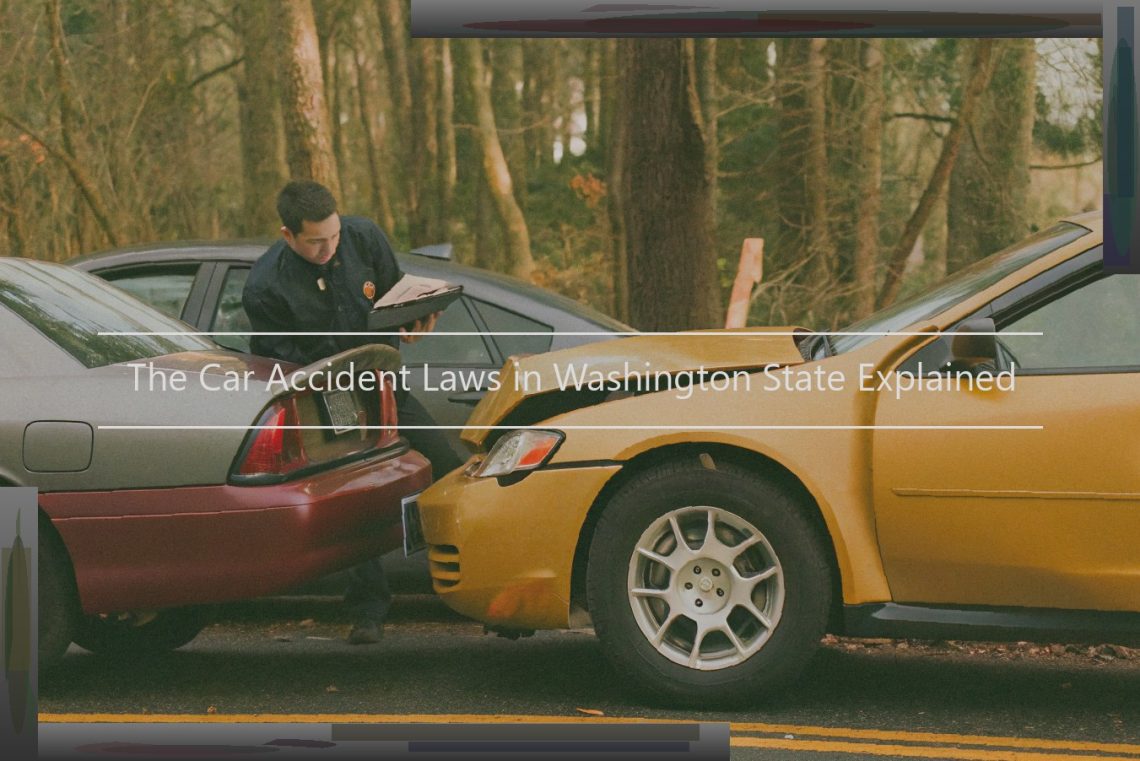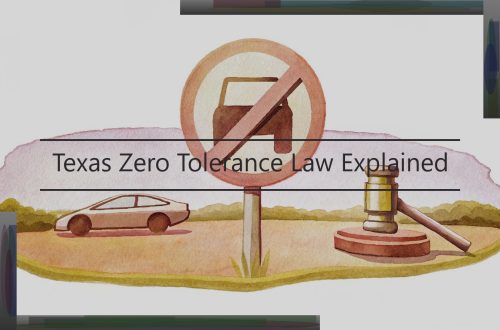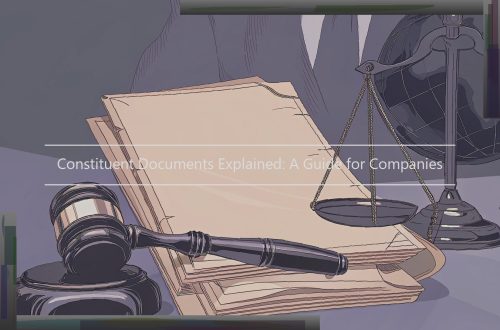
The Car Accident Laws in Washington State Explained
Introduction to Washington Car Wreck Laws
Washington State has specific laws that regulate car accidents and the responsibilities of drivers. These laws provide the legal framework for how car accident claims are filed, how damages are calculated, and what drivers need to do when they are involved in an accident.
In Washington, state statutes outline the obligations of drivers who are involved in an accident. According to Washington State law, if a driver is involved in an accident, he or she must stop at the scene, provide information to the other party, and render aid if necessary. Assistance can be as basic as calling for help or as significant as offering transportation to the hospital. The statute excludes drivers only if they are "physically incapable of providing it."
If a driver fails to stop at the scene of an accident, he or she could face criminal charges . Vehicle code violations for hit and run accidents carry stiff penalties, including fines and the loss of driving privileges. Additionally, the injured party may file a civil claim for damages against the driver who left the scene.
Washington State has a statutory "statute of limitations" that limits the amount of time that injury victims have to file a personal injury claim against a negligent driver. Generally, the statute of limitations for a car accident claim in Washington is three years. Failure to file a claim in a timely manner could mean the injury victim loses the right to seek any damages from the other driver. There are certain exceptions to the rule [e.g., the other driver fled the state], so it is important to contact an experienced personal injury attorney for assistance.
No Fault Versus At Fault
There are two types of car insurance systems in the United States: at fault and no-fault states. In a no fault system, drivers are required to carry no fault insurance, which covers their own medical expenses, property damage, and other expenses related to a car accident, regardless of who is at fault for the collision. In an at fault system, the culpable driver’s insurance policy pays for damages, while their own policy only covers their medical expenses. The injured party files a claim with the other driver’s insurance company. Therefore, an injured party in an at fault state must prove that the other driver was at fault for the accident in order to recover damages. Washington State operates under an at fault system. Washington is a pure at fault state. All of the parties involved in the accident must be liable for the costs of the accident in some way. When one party is found 100% at fault, that party is held responsible for all damages. However, if more than one party is found responsible, at fault, and/or liable for the collision, the damages may be split amongst the parties according to each party’s percentage of fault for the accident. When more than one party is held responsible for a car wreck, damages are apportioned according to each driver’s percentage of responsibility for the accident. For example, Driver A is found 60% responsible for the accident and Driver B is found 40% responsible for the accident. Each driver is held liable for the other driver’s damages in the amount they were found responsible. In this example, Driver A would be required to pay Driver B 40% of his damages and Driver B would pay Driver A 60% of his damages. If the parties have different liability amounts for the damages, the driver with the higher liability amount pays the other driver accordingly. For instance, if Driver B suffers $10,000 worth of damages and Driver A $20,000 worth of damages, Driver A would pay Driver B $4,000. Then, Driver B would reimburse Driver A for $6,000 of their $20,000 worth of damages. A pure at fault system is a complicated and tedious method of collecting damages after a car accident. Because of the complexity, it can be hard for victims of car accidents to know which party or parties are culpable for the accident. Having an experienced Seattle Car Crash Lawyer on your side can help you understand the laws and how the courts may decide to re-apportion damages.
Liability Insurance Requirements
In Washington State, vehicle owners are required to maintain certain insurance coverage on their vehicles at all times. The legislature has enacted compulsory insurance laws that mandate a driver must provide proof of financial responsibility for any injuries or damage caused in an accident that occurs in Washington State.
When you deal with an at fault driver you will typically be dealing with the driver’s liability insurance. Liability insurance is the most common type of car insurance purchased and the minimum coverages are: In most circumstances, if the at fault driver has these minimum coverages their insurance company will pay up to these limits for any injured person per accident. Liability insurance does not pay for the damages to the at fault drivers vehicle nor the damages to the vehicle of a non at fault driver. In other words, liability insurance only pays for the damage caused to someone else that is directly related to the accident in which the at fault driver was involved. The at fault driver’s property damage policy would pay to repair or replace their vehicle. In the case of uninsured and underinsured motorist coverage, if you or someone you know is injured in a car accident, this type of coverage may come into play and pay your medical expenses. To clarify, in order for the uninsured or underinsured coverage to cover the injured person, the injury must occur in a motor vehicle accident.
What to Do After a Car Wreck
If possible, one of the first things you want to do is ensure the safety of everyone involved in the car crash. You should then call the police to report the accident. Don’t leave the scene of the collision without talking to the other driver, if it is safe to do so. It is also important to gather evidence about the crash at this time. This includes taking pictures and making notes about things you observe at the scene like conditions, the weather, the layout, the cars, the people involved, and obtaining witnesses’ contact information. You should also get the registration and insurance information from the other driver as well as the names of the police officers who respond to the scene.
Next, you should immediately seek medical attention, even if your symptoms are mild. Symptoms of internal injuries or concussion may not be fully apparent for days or weeks after the accident. Seeking early treatment provides documentation of the trauma done to your body, improves your chances of recovery, and shows an insurance provider that you are taking your injuries seriously.
You will then want to start a medical file with all of your records related to your event. Keep copies of any bills, receipts, reports, paperwork, treatment plans, or insurance forms. You will also want to make sure you keep all phone numbers, names, addresses, and notes about conversations you have had with insurance companies, witnesses, and other persons involved in the incident.
Ask your lawyer how you can help with your personal injury claim. Make sure that you keep them updated with your contact information and the status of your injuries. You need to document everything, including lost wages or business, property damage, and anything else of value that you cannot use anymore, or that you have lost because of the injuries you suffered in a Washington car crash.
Washington Statute of Limitations
If you are injured in a car accident in Washington state, the law (RCW 4.16.200) gives you just three years to file your claim – and that’s from the date of your injury or accident. This is true for all personal actions based on their "actions in trespass"). For personal actions not based on "actions in trespass" (not resulting from a negligent or wrongful act), the limitation period is two years.
This means that you have only until the third anniversary of your accident in which to commence proceedings. Your attorney should be able to provide you with any help you need in doing this by affording you a written memorandum of the applicable law.
It is important to observe that, if you join the United States or any of its agencies as a party defendant, different laws apply. You then have six months after that agency or the Attorney General has received notice of the claim which you made to him to file your claim.
In determining the applicable limitation period, it is important to ascertain whether the statute in question affects the substantive, or the remedial, rights; if it affects remedial rights, it cannot be availed of by tortfeasors as a defense.
Usually the applicable period begins to run from the time of the injury, but if the injury does not become known to the party suffering from it until sometime thereafter, the running of the statute will be stayed provided there was due diligence in making the claim.
Comparative Negligence in Washington
The doctrine of comparative negligence comes into play in a car accident claim when multiple parties are partially responsible for the crash. Washington State’s comparative negligence laws allow for claimants and defendants to share some responsibility in an accident, meaning that some percentage of your negligence can be offset by an insurance payout.
Let’s use an example: you’re slowing down for a red light and the driver behind you doesn’t see it, causing injury and damage. Under Washington State law, you may think that you’re entitled to 100% of damages under the assumption that the other driver is entirely to blame . In truth, Washington State follows pure comparative negligence, meaning you’ll be assigned a percentage of the fault despite your level of compliance. In this case, you had ample time to stop — and though the other driver’s negligence caused the accident, you’d be part of the reason the accident happened at all. If a jury determined you were 10% at fault for not stopping when you should have, your compensation would then be lowered by 10%. Pure comparative negligence in Washington would reduce a payout by the awarded fault percentage. Under insurance company standards, the insurance company would still pay out the entire amount minus your comparative negligence percentage Even if you’re 99% at fault, you’d still get compensated for that 1%.
Law Enforcement and Written Reports
Law enforcement officers play a crucial role in responding to car accidents and are tasked with documenting the scene and gathering evidence related to the incident. They also have the important job of evaluating who is at fault for the accident. This assessment is done through witness interviews, examining the vehicles and surrounding area, and identifying any citations that may have been issued. The information gathered by police can be invaluable when settling insurance claims or pursuing legal avenues.
The accident report compiled by the responding officer may be the only record of the accident available if no witnesses are present, if the insurance company did not employ surveillance on all involved, or if an attorney was not hired and no lawsuit filed. This document includes important contact information, notes on any injuries sustained, and details about vehicles involved in the accident and the resulting damage. This information is critical not only to the insurance companies but also to the attorneys hired to represent the victims’ interests in the legal system.
If you have been in a car accident, be sure to obtain your copy of the accident report and hand it to your attorney as soon as possible. To get a head start on your case, many attorneys will refer you to a medical professional for treatment as your case works its way through the system. This helps ensure that you get the most appropriate treatment with the least amount of hassle.
When to Hire an Auto Crash Lawyer
Until recently, most people viewed the legal consequences of a car accident as a personal decision. They often did not hire a personal injury attorney to negotiate for them. Unfortunately, insurance companies and corporations use claims adjusters to try and minimize their liability. An experienced car accident lawyer understands how insurance companies work, and how to protect their client’s rights.
Hiring an experienced personal injury attorney should be part of everyone’s plan. Your attorney will negotiate with the insurance companies and corporations on your behalf. Let your attorney do the work so you can focus on healing from your injuries.
Some defense teams would tell you that they never settle a case without litigation. However, a trustable law firm will usually be willing to negotiate fairly. Sometimes it is necessary to file a lawsuit to get the $money you deserve under the law. However, most Seattle law firms aggressively pursue settlements with insurance companies and corporations.
It is upon the hiring of a personal injury attorney that you start to receive the benefits of the legal representation. This becomes especially important when medical bills, lost insurance time payments, and lost wages become a part of your life.
Frequently Asked Questions
What happens if the other party involved in the accident doesn’t have insurance?
If the at-fault party does not have insurance, you may take action against your own insurer or against the at-fault party under Washington’s uninsured motorist statute. A personal injury attorney can examine the details of your situation and help you determine why your claim against your uninsured motorist failed.
My insurance claim for my injuries was denied. Why?
Your claim may have been denied due to a lack of medical documentation of your injuries or the claim may be improperly filled out. A personal injury attorney can help you navigate through what should be a fairly simple process .
What kind of coverage do I need to protect me from careless drivers with inadequate insurance?
Insurance is required to be offered by state auto insurers. In fact, it is necessary to carry insurance in order to lawfully operate a vehicle. Insurance protects everyone -especially you. Personal injury attorneys can evaluate and explain coverage and insurance.
Will auto insurance help me recover medical expenses I’ve incurred because of my car accident?
Auto insurance coverage allows all drivers to take advantage of the Personal Injury Protection which allows you to receive insurance compensation for medical expenses and lost wages immediately after an accident.




